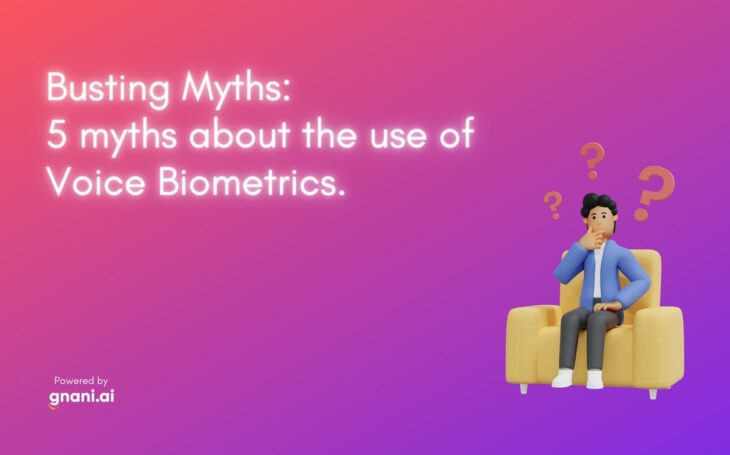
Voice biometrics is an exciting and growing field of technology that offers many benefits to organizations and individuals alike. However, there are still a lot of myths and misconceptions about voice biometrics that need to be addressed.
When it comes to voice biometrics, there are a lot of myths and misconceptions out there. Here are 10 of the most common myths about voice biometrics, and the truth behind them:
- Voice biometrics is only used for authentication.
This is one of the most common myths about voice biometrics. While authentication is the most well-known use case for voice biometrics, it is far from the only one. Voice biometrics can also be used for identification (to identify a person from a database of known individuals), speaker verification (to verify that a person is who they say they are), and fraud detection (to identify fraudulent or spoofed calls).
- Voice biometrics is only used for security purposes.
Voice biometrics can indeed be used for security purposes, such as authenticating users for access to sensitive information or systems. However, voice biometrics can also be used for non-security purposes, such as customer service (to authenticate customers for account support) or marketing (to identify potential leads).
- Voice biometrics is only used for live calls.
While live calls are the most common use case for voice biometrics, the technology can also be used to analyze recorded or stored audio files. This means that voice biometrics can be used for things like call recording review (to identify which recordings need to be reviewed) or speech analytics (to analyze customer sentiment from recorded calls).
- Voice biometrics is only used by businesses.
While voice biometrics is most commonly used by businesses, there are a growing number of consumer-facing applications for the technology as well. For example, many banks and credit card companies are now using voice biometrics for customer support, and there are a number of mobile app developers using voice biometrics for user authentication.
- Voice biometrics is only used by humans.
One of the most common myths about voice biometrics is that it can only be used to authenticate humans. However, this is not the case. Voice biometrics can also be used to authenticate non-human callers, such as automated call systems or IVR (interactive voice response) systems.
- Voice biometrics is only used for spoken words.
While voice biometrics is most commonly used for spoken words, the technology can also be used to analyze other sounds, such as laughter or crying. This means that voice biometrics can be used for things like emotion detection (to identify emotions in customer calls) or speaker recognition (to identify speakers from a database of known individuals).
- Voice biometrics is only used for English speakers.
One of the biggest myths about voice biometrics is that it can only be used for English speakers. However, this is not the case. There are a growing number of voice biometrics solutions that support multiple languages, and the technology is being used in a variety of international markets.
- Voice biometrics is only used for phone calls.
While voice biometrics is most commonly used for phone calls, the technology can also be used to analyze other audio sources, such as video or audio files. This means that voice biometrics can be used for things like video surveillance (to identify people from recorded footage) or audio forensics (to analyze recordings for evidence).
- Voice biometrics is only used by law enforcement.
One of the most common myths about voice biometrics is that it can only be used by law enforcement. However, this is not the case. Voice biometrics is being used by a growing number
of businesses and organizations for a variety of purposes, such as customer service, fraud detection, and lead generation.
- Voice biometrics is only used for audio files.
While voice biometrics is most commonly used for audio files, the technology can also be used to analyze other types of data, such as text or images. This means that voice biometrics can be used for things like text-based search (to identify documents from a database) or image recognition (to identify people from photographs).
Voice biometrics is a powerful technology with a wide range of potential applications. While there are some myths and misconceptions about voice biometrics, the truth is that the technology can be used for much more than just authentication. If you’re looking for a way to improve your customer service, reduce fraud, or just get more out of your recorded calls, voice biometrics may be the right solution for you.
What other myths have you heard about voice biometrics? Let us know in the comments.




